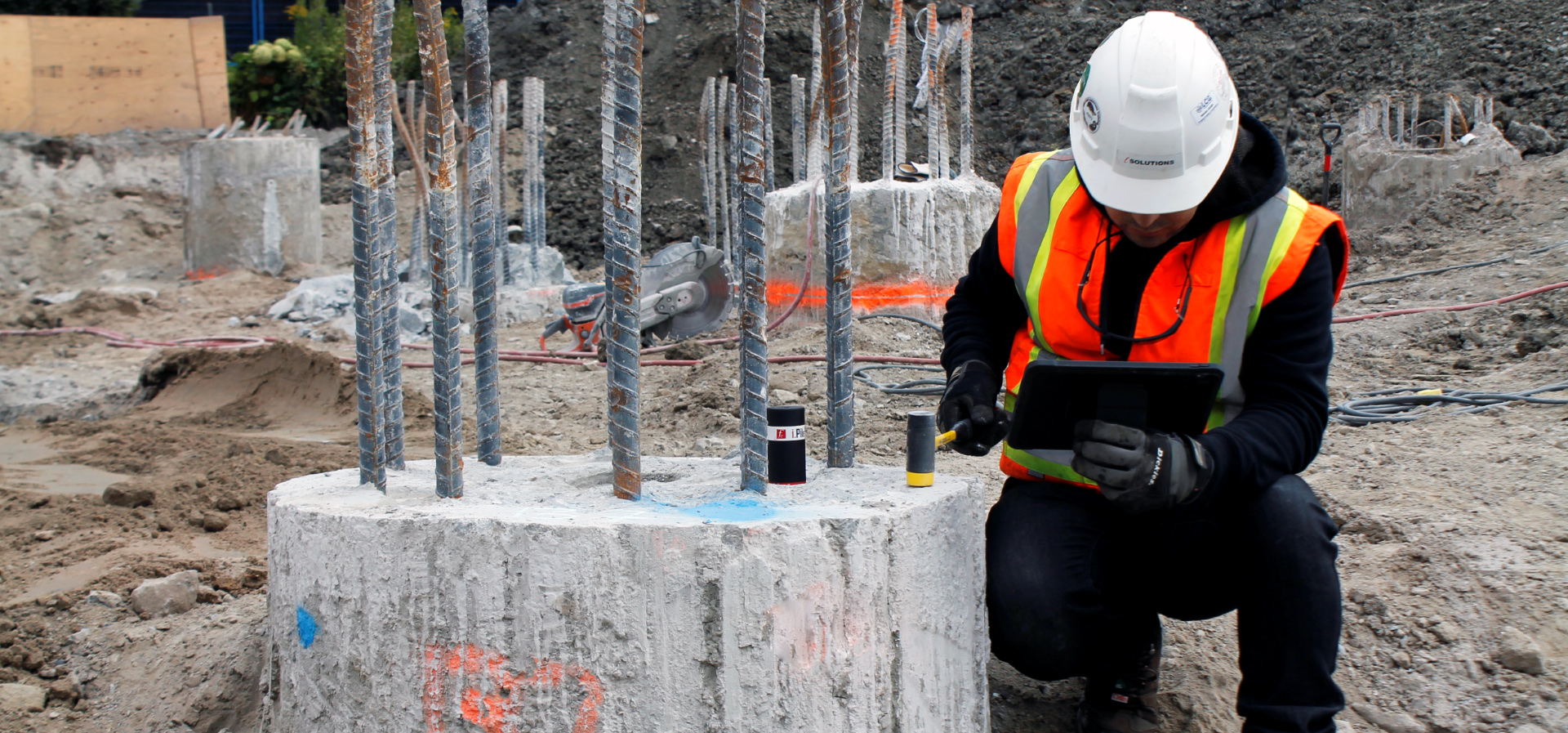
Material formed by mixing binder (usually cement and supplementary cementitious materials), coarse and fine aggregates, water, with or without incorporation of admixtures. The mix hardens through a process called hydration.
Deep foundations or Bored piles (drilled shafts or caissons) are formed with or without a steel casing by excavating or boring a hole in the ground and filling with concrete. Steel reinforcement (often used as circular array of vertical and transverse reinforcement).
Deep foundations are referred to a special type of foundations which transfer structural loads through layers of week soil into suitable bearing strata. In some cases, retaining walls such as diaphragm walls and secant pile walls are are also considered as deep foundations.
Pile Integrity refers to certain characteristics of deep foundations and piles such as:
- Physical Dimensions of Pile (Length or Cross-Section);
- Continuity of Pile (presence of Voids or Major Cracks); and
- Consistency of the Pile Material.
Pile Integrity Test (PIT), or “low strain impact integrity testing of deep foundation” is a widely used non-destructive test method for the evaluation of pile quality, and integrity. The test can also be used to estimate the unknown length of existing piles and foundations. In the low strain impact integrity testing, the response of the pile to an impact on the head of the pile shaft is determined by a high precision transducer mounted on the pile head. The transducer can either be an accelerator, or a velocity sensor. The test standard allows two different procedures to obtain acceleration and force information: 1) Pulse-Echo Method (PEM) or Sonic-Echo (SE) and 2) The Transient Response or Impulse-Response (IR).
The property of freshly mixed concrete which determines the ease with which it can be mixed, poured, compacted, and finished.
Tremie concrete is a type of concrete with the ability to achieve satisfactory compaction by gravity when placed in a deep foundation, under submerged conditions.
Tremie pipe is a segmental pipe with waterproofing joints, and is used for pouring concrete in deep foundations
Any defect in concrete piles and deep foundations that can negatively impact the load bearing capacity of the pile, as well as its static and dynamic response. Certain issues during pile construction can result in defects:
- construction issues
- drilling problems
- casing management problems
- slurry management problems
- design and detailing deficiencies
Concrete pouring method by use of a tremie pipe in order to prevent the concrete from segregation or contamination by the fluid inside the excavation, where the tremie pipe – after initial placement – remains immersed in previously poured, workable concrete until the completion of the concreting process.
A pile cap is a thick concrete mat that rests on concrete or timber piles that have been driven into soft or unstable ground to provide a suitable stable foundation. It usually forms part of the deep foundation of a building, typically a multi-story building, structure or support base for heavy equipment, or of a bridge. The cast concrete pile cap distributes the load of the building into the piles. (source: wikipedia)
The dynamic Young’s modulus of
the pile material multiplied by the applicable cross sectional
area of the pile and divided by the strain wave speed (source: ASTM D5882)
Sonic echo method is a special setup in which measurements of the pile head velocity and force (force measurement optional) are evaluated as a function of time.
Transient Response method is a test procedure in which the ratio of velocity transform to force transform (force measurement required) are evaluated as a function of frequency.
See Sonic Echo Method
The impact may be delivered by any device (for example, a hand held hammer with hard plastic tip) that will produce an input force pulse of generally less than 1 ms duration and should not cause any local pile damage due to the
impact.
A precise acceleration or velocity sensor that is capable of collecting motion in pile head that is caused by the hammer impact. Both accelerometers and geophones meeting the minimum requirement of the ASTM D5882 can be used
Bottom end of the pile, or pile end (the end sitting on strong starta) is usually referred to as Pile Toe.
Pile head is usually referred to the top section of the pile. pile head might need to be adjusted after construction to adjust the final pile head level needed.
Preparing pile head is essential prior to testing for integrity. Pile head might need to be broken and removed. The pile head surface needs to be flat and free of dust (hand held grinder can be used).
Coupling material is used to develop firm bound between the motion transducer and the concrete at the surface of the pile head. It can be Petroleum Jelly (Vaseline), or kneadable putty.
A reflectogram presents the response of the pile to the applied force in time domain. Horizontal axis is often time, or corresponding pile depth, while the vertical access is the normalized amplitude of the arriving wave.
